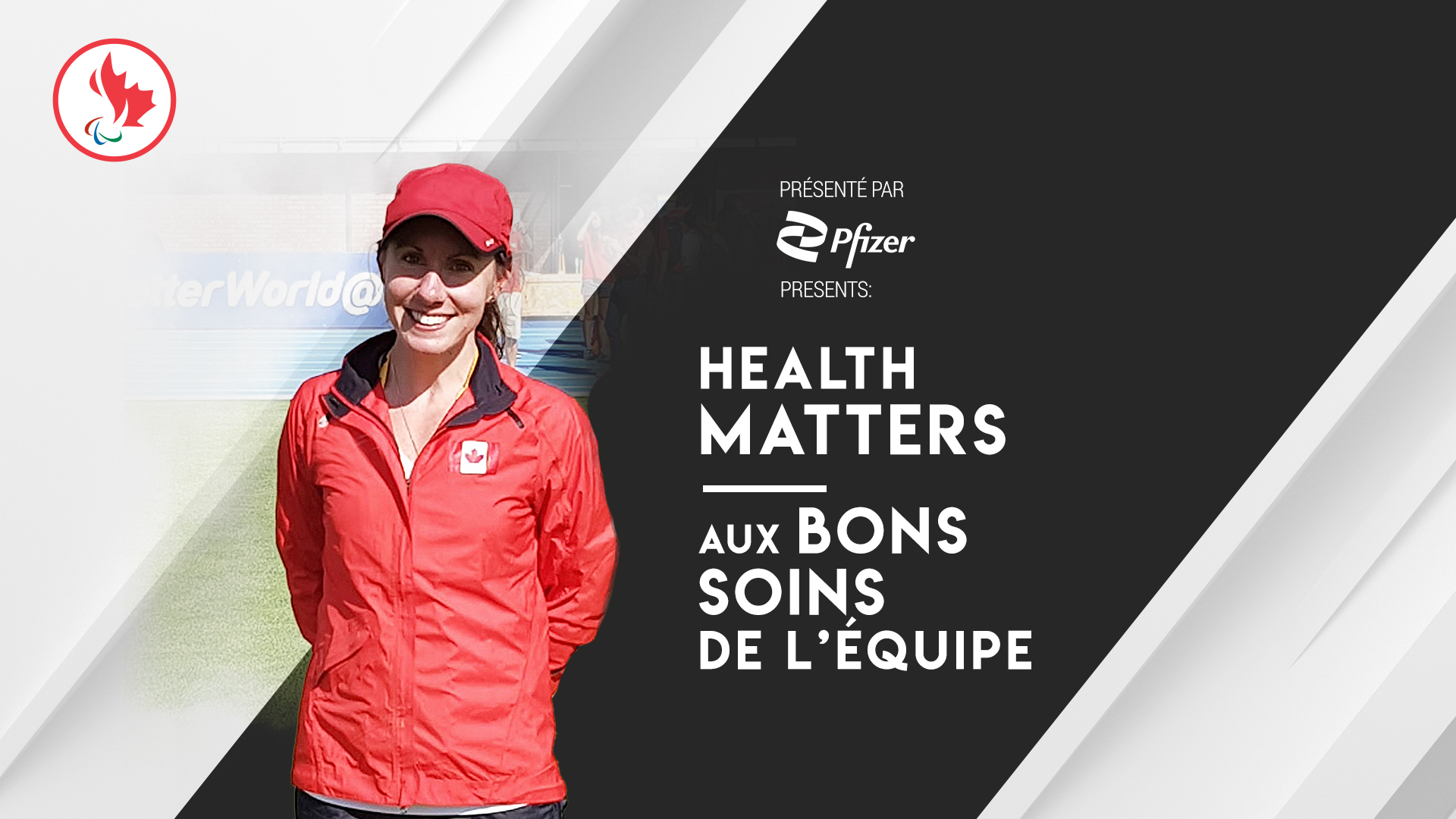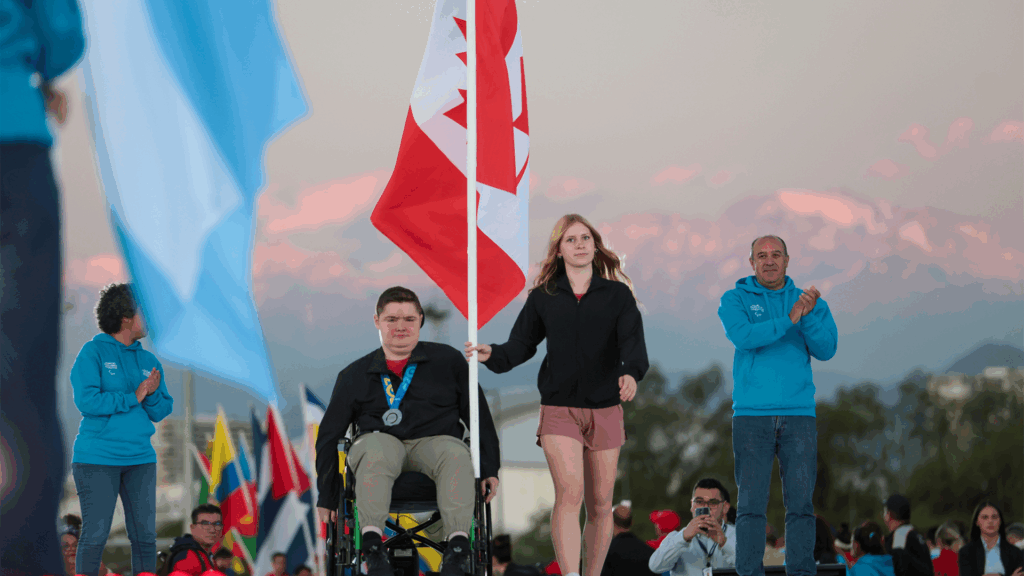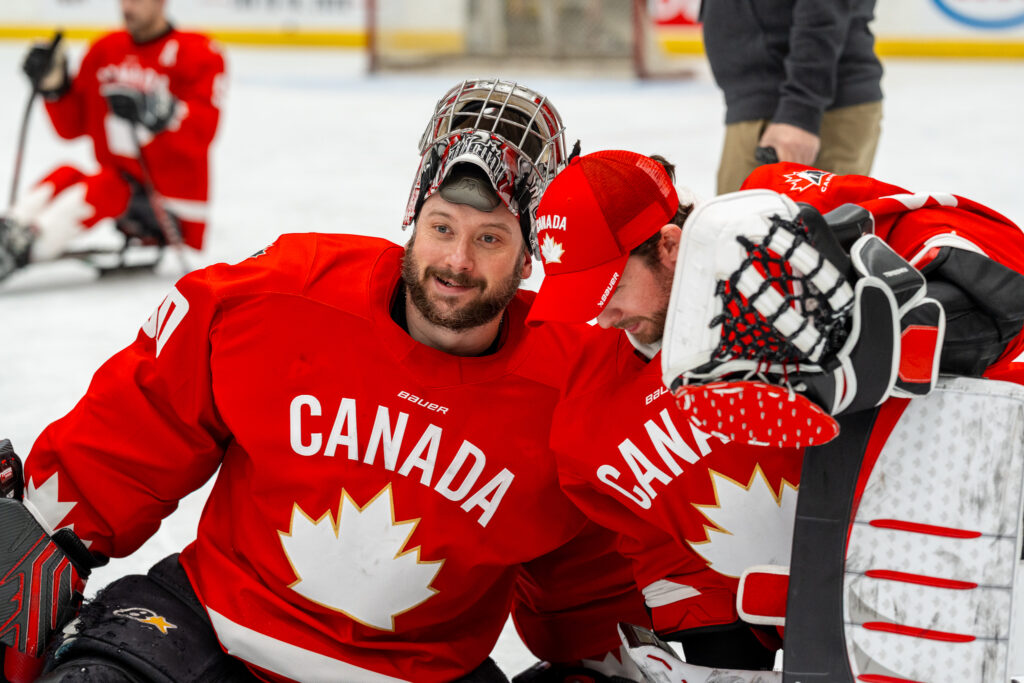Health Matters: Patricia Roney helping Canadian Para athletics team stay ready for Tokyo
Para Medical Lead oversees health and safety for Canada’s track and field athletes

With a team of 16 competitors heading to the Tokyo 2020 Paralympic Games, Canada’s Para athletics team ranks as one of the largest by numbers. Trying to manage the health and wellness of such a sizeable team can be a challenge in the best of times.
Add in a global health crisis, the cancellation of typical training opportunities and competitions as well as the looming uncertainty surrounding the Paralympic Games and it becomes even more challenging.
But, as the Para Medical Lead for Athletics Canada, that’s exactly what Patricia Roney does.
“I work closely with all members of the Integrated Support Team to help ensure athletes have access to appropriate therapy and medical support in their respective hometowns and while away in training and competition environments,” she says from her home base in Victoria, BC. “I help link the dots between an athlete’s personal home therapist, their coach, and our National Therapy Team to ensure continuity of care for each athlete.”
Para athletics is a decentralized sport, meaning team members are located across Canada instead of working and training together in one common hub. Each athlete has their own health care providers offering treatments so Roney’s oversight helps keep health information organized and, ultimately, helps to proactively manage fitness and injuries.
It’s a critical role, especially given the breadth of the sport.
“There are many different disciplines in Para athletics and even within those there are different disciplines,” she explains.
Para athletics features track events for ambulatory runners and wheelchair racers including sprints (100m, 200m, 400m), middle distance (800m, 1500m), long distance (5,000m, 10,000m), relay races (4x100m) and the marathon. On the field, there are jumping and throwing events including high jump, long jump, and triple jump and discus, shot put, club throw and javelin.
The rules of Paralympic track and field are almost identical to those of its Olympic counterparts, though some allowances are made to accommodate certain impairments. For example, visually impaired runners may compete with guide runners attached to them by a tether at the wrist.
When it comes to monitoring the athletes’ health and wellness, especially between the sport events, “there’s no one size fits all approach at all,” Roney, a physiotherapist by trade, says.
“There never is when you’re providing any type of care but it’s particularly true in Para athletics.”
“Just because an athlete has a particular impairment does not mean their bodies are going to respond in one particular way,” she adds. “If an athlete has the inability to regulate their body temperature or sweat, which we see with some spinal cord injuries, that doesn’t mean that all of our athletes with spinal cord injuries will fit under that category.”
The lead up to these Paralympic Games has been unlike any other, Roney adds. Due to the one-year postponement of the Games due to the coronavirus, most Para athletes saw their typical pre-Games training camps and competitions cancelled. Many on the team haven’t competed at all in the last year, she says.
“Being aware of the potential spikes in injury as the athletes start coming back is definitely on our minds. And then there’s the mental health side of COVID – whether it was uncertainty about whether the Games would happen or even how to keep the athletes motivated – it all played a part.”
Roney says being mindful of injuries is important not only for the athlete’s ability to compete, but it’s often much more than that.
“You really have to consider their overall health and not just sport,” she says. “If an athlete with a leg prosthetic has a wound, you really have to take that seriously. It’s not just that they have to take a break from sport; they’re having to walk on that leg every day. If an athlete who uses a wheelchair has a shoulder musculotendon injury, their ability to transfer and be independently mobile may be impacted as they depend so heavily on their upper extremity for mobility. Sport is 100 percent an athlete’s focus but as medical professionals, we have to consider the impact on their daily life.”
As the competition nears closer, Roney and the Para athletics team are finalizing their individualized plans for each athlete in Tokyo. After a year-long delay marked by so much uncertainty, Roney is sure this proactive planning approach will let the team “come in as calmly as possible” and shine on the world stage.
Health Matters, presented by Pfizer, shares stories of the important team behind the team, supporting the athletes’ health and wellness.
More:
HEALTH MATTERS: DR. ANDREW MARSHALL READY TO SUPPORT CANADA’S PARALYMPIANS



"*" indicates required fields
"*" indicates required fields